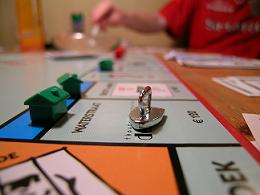The similarity must end there, of course, because those outcomes aren’t options for the Carbon Pollution Reduction Scheme. Emissions trading is not about entertainment but about the long term national interest in efficiently achieving emissions reductions.
No lasting solution is possible with a simple victory of one side over the others. To provide the business certainty that will drive lasting change, the fundamentals of a climate policy need bipartisan backing.
With the Government and the Opposition at the pointy end of their negotiations, it is clear that a deal can be done. The Government has developed an imperfect but broadly credible scheme. The Opposition has constructively moved to minimise the cost to Australian jobs and investment as we transition to a low carbon economy. There is apparent goodwill on both sides – but also a danger that inflexibility and financial constraints will scuttle a deal.
A major danger if legislation is not passed this year, is that there may be a lurch away from the CPRS market mechanism approach, towards intrusive, inefficient, direct regulation of where and how emissions happen. We could conceivably end up after the next election with a negotiation around the Greens’ quixotic platform.
The outline of a responsible deal is fairly clear - comprehensive but reasonable amendments to preserve Australian competitiveness, balanced by substantial but sensible savings that improve the CPRS.
Ensuring competitiveness isn’t just about improving existing measures for the most emissions intensive trade exposed (EITE) industries, though at the very least the strength of these should be maintained from 2015 unless our global competitors are similarly carbon-constrained.
More also needs to be done for the more numerous trade-exposed industries, including many small and medium-sized firms, who currently do not qualify for assistance. A boost to support through the Climate Change Action Fund would help them invest to reduce their carbon exposure.
If coal mining is to be covered but not recognised as EITE, adjustment assistance available for the highly emissions intensive mines will need to be strongly reinforced.
And securing the energy supply that underpins our entire economy requires more adequate compensation for coal-fired generators, allowing them to roll over their loans and maintain their assets while preserving incentives for low-emissions generation.
Those changes will greatly reduce the economic cost of adjusting to emissions trading, but they will undeniably come at a substantial fiscal cost. The Government’s updated budget numbers suggest the CPRS is already in a small deficit. But they also show two important opportunities for savings.
One is the very generous household compensation package, which will boost pensions, benefits and tax offsets. This package was drawn up to compensate for the 2012-13 carbon price of $29 that the Government was forecasting in May.
Now that the forecast has been revised down to $26, the necessary payments boost should drop too – just as the value of assistance to industry has diminished. This would still see households as generously compensated as they might have expected in May, while saving around $500 million in 2012-13 and billions more thereafter.
There is a bigger saving that may not be as painless but is even more necessary. Quite simply, the treatment of fuel needs to be fixed. It never made much sense to include fuel in the scheme while cutting excise to offset the price impact. As it stands, this policy would actually make petrol more attractive and dilute the carbon price signal that would otherwise promote fuel efficiency measures.
It would be nice if we could cut emissions without raising the cost of driving – but why should petrol be any more sacred than electricity or gas? With oil prices way down from their boom-time peak and the future of our essential industrial base at stake, there are far better uses for the $20 billion this policy would cost over the years to 2020.
These two savings could easily fund a worthwhile package of amendments to preserve Australian jobs. It is time for the Government and the Opposition to roll the dice together – to pass “Go”, collect $20 billion, and bring this exhausting game to a conclusion so that Australia can get on with the real business of reducing emissions while maintaining our prosperity.


